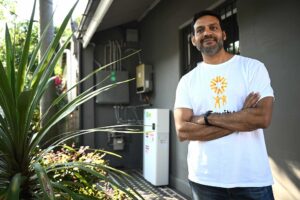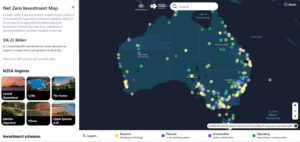Methane emissions from coal mines could be more than double previous estimates, according to a new study.
The fossil-fuel industry is understood to be one of the biggest sources of atmospheric methane, primarily due to leaks from the production of oil and gas.
However, a new paper published in the Journal of Cleaner Production suggests that coal mining may actually be a bigger contributor to levels of the greenhouse gas, with emissions set to grow considerably in the coming years.
This is even more pronounced when accounting for the impact of old coal mines that continue to seep methane long after they have been abandoned. To date, attempts to curb methane emissions from mines have been limited.
The authors of the new study say there are considerable gaps in the available data, and their results are based on extrapolations from the only nations for which sufficient information was available.
Nevertheless, their findings are the latest in a string of papers to suggest methane emissions from the fossil-fuel industry have been “severely underestimated”.
Mine methane
Methane is produced by natural sources, such as wetlands, as well as human activities, such as agriculture and fossil-fuel production.
While there is considerable uncertainty around the contribution from fossil fuels, which makes up around a fifth of the total, previous work has suggested oil-and-gas production is the biggest contributor.
Meanwhile, coal, which releases 75% more CO2 than gas per unit of energy, has been relatively overlooked when it comes to methane, a far more potent greenhouse gas.

But coal can be a source of methane, too. The gas escapes from coal seams and is often siphoned off through ventilation systems to ensure a safe environment for miners.
Coal-mine methane (CMM) is relatively understudied. But in its most recent World Energy Outlook (WEO), published in November 2019, the International Energy Agency(IEA) attempted to quantify the global total, settling on a figure of 40m tonnes (Mt) each year from operational coal mines.
The IEA says nations with deeper coal mines and less regulatory oversight have higher levels of these “indirect” methane emissions, with China by far the largest contributor.
Taking into account its climate impact relative to CO2, media coverage of the report compared these emissions to the combined impact of the international aviation and shipping sectors. The IEA coal mine emissions estimate also comes to around half the 79Mt it estimated for oil-and-gas operations in 2018.
However, the new study estimates that CMM in 2020 will be much higher than this, some 135bn cubic metres (bcm), equating to roughly 92Mt of methane.
The authors also note that, for the first time, they developed a methodology for estimating global methane emissions from old mining sites, suggesting a considerable role for abandoned mine methane (AMM), which in the past has been largely ignored. When factoring this in, coal methane emissions in 2020 rise to 114Mt.
The authors say that using their base year of 2010, methane emissions were also higher than other recent widely cited studies and inventories.
They calculate the total volume for that year as 85Mt, around 50% higher than that of the Community Emissions Data System (CEDS) and double the Emission Database for Global Atmospheric Research (EDGAR) value.
Uncertain modelling
To arrive at their updated estimates, the researchers developed a new model for calculating CMM.
The central calculation is straightforward – multiplying coal production, or tonnes of coal, by the emissions factor, which is how much methane is released (in cubic metres) for every tonne of coal mined.
As coal production data is relatively uniform across studies, Dr Nazar Kholod from the Joint Global Change Research Institute, who led the research, tells Carbon Brief their higher estimate for methane emissions is primarily the result of the emissions factor they used.
Some studies take the gas content of extracted coal as a simple emissions factor, but this does not account for all the methane escaping from surrounding seams. Establishing an “emissions factor coefficient” to multiply by the gas content can provide a more realistic estimate of total methane emissions, Kholod says.
There is very little national data available to calculate this figure and Kholod says that the IEA does not provide the emissions factors they use or details of how they derived them.
His team based its emissions factor coefficient on relatively detailed datasets from US and Ukrainian coal mines, the only ones available, according to Kholod. This resulted in a value of 1.7, which is within the range established in previous work.
Multiplying this value by its estimates of coal gas content gave the team the emissions factors they needed for the analysis.
However, there remains a lot of uncertainty due to issues such as how methane is measured, as well as the type of coal and depth of mines. All of this can vary a lot between countries, whereas this study relied on extrapolating globally from the US and Ukrainian data.
In the study, Kholod and his team note that, given these uncertainties, CMM levels could be roughly a third higher or lower than their estimated value. Besides better data collection at coal mines, they also mention the potential for using satellite data to independently sense-check emissions estimates with observations.
Dr Marielle Saunois, who leads the Global Methane Budget and was not involved in the new study, tells Carbon Brief that owing to the various complicating factors, calculating a global estimate for coal methane is very challenging. She also says that Kholod’s figure is not as far from previous attempts as it first appears:
“If you take their uncertainty and put that uncertainty around the other estimates, at some point there is an overlap.”
‘Part of the puzzle’
Kholod says their work “revealed a lot of gaps in data collection and reporting”, but says his team is not the first to suggest methane emissions from the fossil-fuel industry are being underreported.
Specifically, he points to a recent, widely publicised paper led by Dr Benjamin Hmiel that suggested fossil-fuel methane emissions could be 25-40% larger than previously thought. “Dr Hmiel and his colleagues used different methods, but reached a very similar conclusion,” he says.

The projections highlight the importance of preventing the release of methane from coal mines.
However, as it stands, strategies to either store the gas for energy production or burn it off are not being widely implemented.
The IEA estimates that around 45% of oil-and-gas methane emissions could be avoided at no net cost, or even negative costs given the potential to make money from the gas being captured.
“With coal it’s really hard to do that,” Dave Jones from the climate thinktank Ember, formerly known as Sandbag, tells Carbon Brief. He says unlike with oil and gas, the methane from coal is not released in a pure form and can be expensive to capture.
Air passing through mine ventilation systems contains less than 1% methane, according to the IEA.
For Kholod, this again highlights the need for improved data collection:
“When active mines are closed, it is important to preserve information on the mine and prepare the mine to extract AMM in the future…it is clear that methane from closed mines will be a problem for years to come.”
This article was first published in Carbon Brief. Reproduced with permission under Creative Commons licence.








